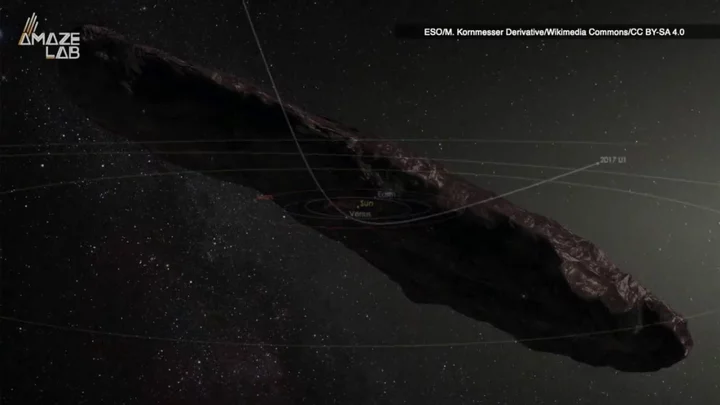
Distant objects show our solar system is bigger than we thought
The solar system is famously vast, but new data from scientists has revealed that it extends even further than once thought. It is a discovery that was made thanks to distant objects that were spotted during a scan of telescope images. They appeared to show faint signs of rock located beyond Pluto, suggesting that the material of the solar system extends further into interstellar space than was previously believed. The new method of looking at telescope images has dispelled decades of hypotheses from astronomers who believed that the Kuiper Belt, a circumstellar disc in the outer solar system, becomes suddenly more sparse from 48 times the distance between Earth and the Sun. But, belts of rubble have now been seen extending out more than twice the distance experts previously thought. The discovery was made by a team of astronomers who were led by Canada's Herzberg Astronomy and Astrophysics Research Centre who were on a mission to find new targets for the probe “New Horizons” to explore on its way through the outer reaches of the solar system. With light at the end of the solar system in short supply, experts realised if they stacked multiple images taken at different times, they could combine the light to increase the visibility of an object, increasing its visibility. Using machine learning to help them on their way, experts trained the system before testing it with real data captured from the Subaru Telescope on Mauna Kea in Hawaii. In comparison to humans, the technology identified more than double the amount of Kuiper Belt Objects, revealing to experts just how vast the solar system is. They presented their findings at the 54th Lunar and Planetary Science Conference 2023. While the team’s results have not yet been peer-reviewed, they appear to suggest that our solar system has a minimum of two rings of material stretching as far as the distance Pluto is from planet Earth. Sign up to our free Indy100 weekly newsletter Have your say in our news democracy. Click the upvote icon at the top of the page to help raise this article through the indy100 rankings.
2023-10-09 23:15
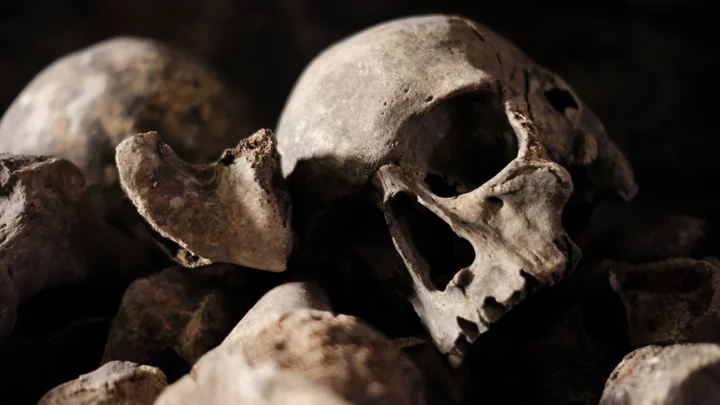
Scientists warn humanity has a '1 in 6' change of dying out this century
In 2020, philosopher Toby Ord published The Precipice, a book on the risk of human extinction. The chances of "existential catastrophe" for humanity in the next century according to Ord? One in six. It was a shocking number that alarmed many. After years of being flooded with warnings over climate change, rogue AI, nuclear weapons and pandemics, it's hard to disagree that humans face worrying chances. In his book, Ord discusses a number of potential extinction events, some of which can be examined through history. His research involved looking at the number of space rocks that have hit the moon over its history to figure out the likelihood than an extinction-sized asteroid hitting Earth. This was, in fact, looked at in 2022 by French scientists Jean-Marc Salotti, he calculated the odds of an extinction-level hit in the next century to be roughly one in 300 million. By contrast, Ord estimated the risk to be one in a million, although he does point out a considerable degree of uncertainty. Probabilities can be hard to understand in this context. Traditional probability, for example, relies on observations and a collection of repeated events, but human extinction would be a one-off. But there is another way to think if, called Bayesianism, after the English statistician Thomas Bayes. It sees probabilities as a ranking system of sorts. Specific number predictions shouldn't be taken so literally, but rather compared to other probabilities to understand the likelihood of each outcome. Ord's book contains a table of potential causes of extinctions, accompanied by his personal estimates of their probability. From a Bayesian perspective, we can view these as relative ranks. Ord thinks extinction from an asteroid strike (one in a million) is much less likely than extinction from climate change (one in a thousand). However, even using Bayesianism traditionally requires the incorporation of observational evidence. So, what do we make of Ord's "one in six"? Well it's better to take it less literally but to think of it as a warning, to jump start action on issues such as climate change to hopefully reduce the risk of human extinction in the next century. Sign up to our free Indy100 weekly newsletter Have your say in our news democracy. Click the upvote icon at the top of the page to help raise this article through the indy100 rankings.
2023-10-09 22:58

Scientists have just discovered a sixth taste to join salty, sweet, sour, bitter and umami
We're all familiar with the different basic tastes - sweet, sour, salty, bitter, and umami - but now scientists have found a sixth one where the tongue detects ammonium chloride. Research from USC Dornsife has discovered that protein receptors on the tongue not only respond to sour taste but also to ammonium chloride as well. Scientists were very much aware that the tongue responds to ammonium chloride, but haven't been able to specify which exact protein receptors... until now. The protein OTOP1 is responsible for this which can be found in the cell membranes and forms a channel for hydrogen ions moving into the cell. Whenever we taste anything that's particularly sour such as vinegar or lemon juice, OTOP1 is able to detect the acidity found in both of those. Therefore, given that ammonium chloride similarly affects the concentration of hydrogen ions within a cell, research was carried out on whether OTOP1 protein would react to this too. After lab-grown human cells with OTOP1 protein were created and exposed to acid or to ammonium chloride, the team found that ammonium chloride was a "strong activator" of OTOP1. “We saw that ammonium chloride is a really strong activator of the OTOP1 channel. It activates as well or better than acids,” Dr Emily Liman, a professor of biological sciences at USC Dornsife and study author. Now, perhaps you're wondering what ammonium chloride tastes like, one example of where it can be found is in salt liquorice candy which is popular in Nordic countries. “If you live in a Scandinavian country, you will be familiar with and may like this taste,” Dr Liman added. Though the flavour can be of an acquired taste and one that many may not be a fan of - but there is an explanation for this. “Ammonium is found in waste products – think of fertilizer – and is somewhat toxic, so it makes sense we evolved taste mechanisms to detect it,” Dr Liman explained. Sign up to our free Indy100 weekly newsletter Have your say in our news democracy. Click the upvote icon at the top of the page to help raise this article through the indy100 rankings.
2023-10-09 22:57

Should new tech rules apply to Microsoft's Bing, Apple's iMessage, EU asks
By Foo Yun Chee BRUSSELS EU antitrust regulators are asking Microsoft's users and rivals whether Bing should comply
2023-10-09 22:18
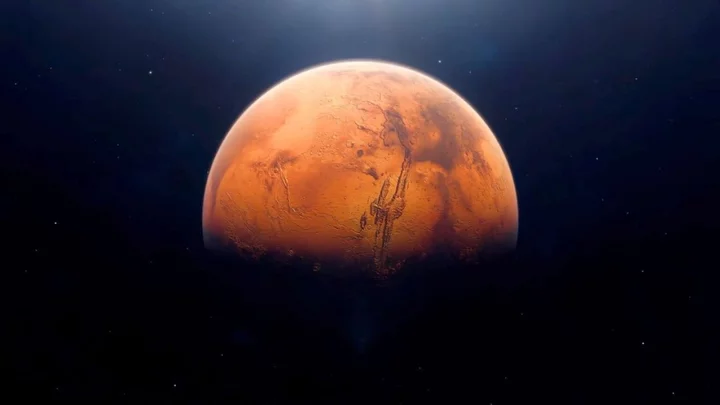
Perseverance rover captures stunning blue sunset on Mars
Mars is often called the Red Planet, but a recent image captured by NASA’s Perseverance rover from the surface would go some way to contradicting that. Earlier this year, Perseverance snapped a sunset from Mars in which the Sun looks blue, a sight which would never be seen from our own planet. The photograph was taken on the rover’s 842nd day on the planet, and shows a Martian horizon with the sun setting behind causing an eerily cool glow. Because of Mars’ distance from the Sun, it gets less sunlight than we do on Earth. Even at its sunniest, it gets less than half our quota of light from the star. And the planet’s atmosphere, which is weaker than Earth’s, is mainly made up of carbon dioxide, with a small amount of nitrogen and a trace of oxygen. This gaseous mix and weak atmosphere causes the light to scatter in a blue haze across the sky. It’s the same process which gives us our blue sky during the daytime, when the light has less atmosphere to penetrate before it reaches our eyes. On Earth, this changes when the sun dips below the horizon, and the light has more atmosphere to penetrate, filtering our blue and violet wavelengths, leaving only reds and oranges. Meanwhile on Mars, the sunlight interacts with the dust hanging in the atmosphere, scattering red light during the day. At twilight, that red light is filtered away, leaving blues. Atmospheric scientist Mark Lemmon of Texas A&M University told Science Alert: "The colours come from the fact that the very fine dust is the right size so that blue light penetrates the atmosphere slightly more efficiently. “When the blue light scatters off the dust, it stays closer to the direction of the Sun than light of other colours does. “The rest of the sky is yellow to orange, as yellow and red light scatter all over the sky instead of being absorbed or staying close to the Sun.” Sign up to our free Indy100 weekly newsletter Have your say in our news democracy. Click the upvote icon at the top of the page to help raise this article through the indy100 rankings.
2023-10-09 22:16

Arm gets Wall Street's 'buy' on royalty plan, cloud expansion
By Aditya Soni and Roshan Abraham (Reuters) -Several Wall Street brokerages started coverage of Arm Holdings with their top ratings
2023-10-09 21:58

CEO of AI company warns his tech has a large chance of ending the world
The boss of one of the biggest artificial intelligence firms in the world has estimated the chance that his technology could end human civilisation is up to 25 per cent. Dario Amodei, chief executive of Anthropic AI, said in an interview that a catastrophic end result of advanced AI technology could come from the tech going wrong itself, or humans misusing it. He said: “My chance that something goes really quite catastrophically wrong on the scale of human civilisation might be somewhere between 10 per cent and 25 per cent. “Put together the risk of something going wrong with the model itself with something going wrong with people or organisations or nation states misusing the model or it inducing conflict among them.” Amodei is a co-founder of Anthropic AI and previously worked for OpenAI, the company which developed ChatGPT. It comes as concerns ramp up across the world about the power of AI, and whether it could eventually lead to catastrophe for humanity. The release of the most recent version of ChatGPT, which illustrated writing skills which, in some capacities such as legal and technical writing, are comparable to that of a human, but at much higher speeds. Amodei added: “That means there is a 75 per cent to 90 per cent chance that this technology is developed and everything goes fine. “In fact if everything goes fine it’ll go not just fine, it’ll go really really great. “If we can avoid the downsides then this stuff about curing cancer, extending human lifespan, solving problems like mental illness… This all sounds utopian but I don’t think it’s outside the scope of what this technology can do.” Amodei did not elaborate on his speculation of how AI could “cure” cancer or “solve” mental illness. A handful of early-stage AI projects have shown promise in early diagnosis of hard-to-detect tumours like some types of lung cancer. But doctors have cautioned against over-optimism of AI’s ability to curer or detect diseases, pointing out that it could also lead to over-diagnosis, potentially making the process even less efficient, rather than more streamlined. Meanwhile, earlier this year, hundreds of AI industry leaders signed an open letter calling for more robust regulations of the technology to lessen the risk that it ultimately leads to the extinction of humanity. The letter, signed by OpenAI founder Sam Altmann and others, said: “Advanced AI could represent a profound change in the history of life on Earth, and should be planned for and managed with commensurate care and resources.” Sign up to our free Indy100 weekly newsletter Have your say in our news democracy. Click the upvote icon at the top of the page to help raise this article through the indy100 rankings.
2023-10-09 19:26

This is the reason why self-service checkouts are fitted with mirrors
With the increasing number of self-service checkout machines popping up in stores for convenience, there is one simple feature that is used to put off potential shoplifters - mirrors. There's a good chance that you've looked at your reflection in the screens fitted to these machines, and the purpose of it is for potential shoplifters to catch themselves in the mirror in the hopes of making them feel guilty. This pang of a guilty conscience is hoped to prevent them from committing any crime (it's not just there for vanity purposes like most of us use it for). Research also backs up the theory that people who see themselves in a mirror are less likely to do something bad. A 1976 study from Letters of Evolutionary Behavioural Science found that when people are around mirrors, they "behave in accordance with social desirability". "Mirrors influence impulsivity, a feature that is closely related to decision-making in both social and non-social situations." When participants in the experiment were looking at mirrors, their "private self-awareness was activated" by them and as a result influenced "decision-making as a non-social cues". Similarly, Psychology Today notes how a mirror allows "people to literally watch over themselves" and this "dramatically boosts our self-awareness". Meanwhile, the issue of self-service checkouts and shoplifting was highlighted in a report by Mashed last year which it appeared to confirm that Walmart's attempt at combatting this problem was a psychological method with the addition of mirrors (though Walmart, alongside other supermarkets, has never confirmed the purpose of their mirrors at their self-service checkout services). Sign up to our free Indy100 weekly newsletter Have your say in our news democracy. Click the upvote icon at the top of the page to help raise this article through the indy100 rankings.
2023-10-09 18:19
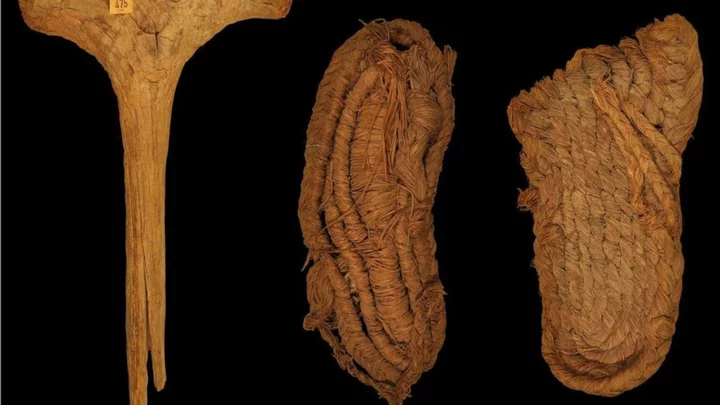
Prehistoric footwear dating back 6,200 years discovered in a Spanish cave
A pair of shoes thought to be the oldest ever found in Europe are now estimated to be even older than scientists had previously thought. About 20 pairs of sandals found in southern Spain are at least 6,200 years old, while other woven objects found in the cave date back 9,500 years, according to a new study. The scientists used carbon-dating on 76 objects found in the Cueva de los Murciélagos, Albuñol, near Granada, which were originally discovered by miners in the 19th century. The objects are particularly valuable to science because they represent the first direct evidence of certain hunter-gatherer skills, such as weaving, in southern Europe. They are made of wood, reed and esparto grass. The shoes measured about eight inches in length. The study was published in the journal Science Advances by a team from the Universidad de Alcalá (UAH) and the Universitat Autònoma de Barcelona (UAB). Francisco Martínez Sevilla, a researcher at the Prehistory Department of UAH, said: “These are the earliest and widest-ranging assemblage of prehistoric footwear, both in the Iberian Peninsula and in Europe, unparalleled at other latitudes. “The new dating of the esparto baskets from the Cueva de los Murciélagos of Albuñol opens a window of opportunity to understanding the last hunter-gatherer societies of the early Holocene. “The quality and technological complexity of the basketry makes us question the simplistic assumptions we have about human communities prior to the arrival of agriculture in Southern Europe.” He said the project placed the cave as “a unique site in Europe to study the organic materials of prehistoric populations”. Cueva de los Murciélagos, or “Cave of the Bats,” is located on the coast of Granada, to the south of the Sierra Nevada. The finds are thought to have been so well-preserved because of low humidity levels in the area. Study co-author María Herrero Otal added: “The esparto grass objects from Cueva de los Murciélagos are the oldest and best-preserved set of plant fibre materials in Southern Europe so far known. “The technological diversity and the treatment of the raw material documented demonstrates the ability of prehistoric communities to master this type of craftsmanship, at least since 9,500 years ago, in the Mesolithic period. “Only one type of technique related to hunter-gatherers has been identified, while the typological, technological and treatment range of esparto grass was extended during the Neolithic from 7,200 to 6,200 years before the present.” Sign up to our free Indy100 weekly newsletter Have your say in our news democracy. Click the upvote icon at the top of the page to help raise this article through the indy100 rankings.
2023-10-09 17:49
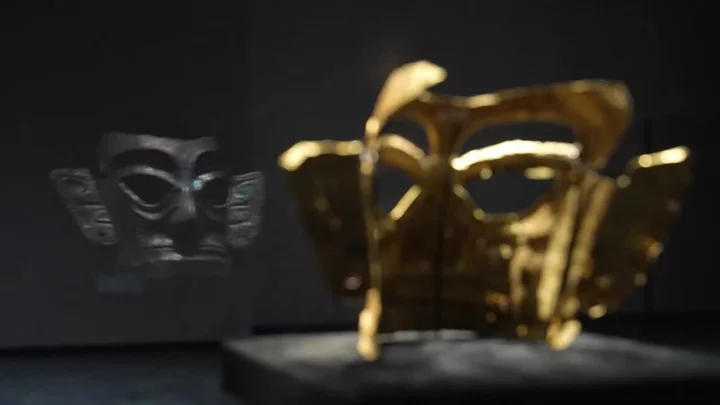
Archaeologists have just found a rare 18th-century cold bath
Archaeologists have found a rare cold bath below the 18th-century Bath Assembly Rooms. The rooms, completed in 1771, were fashionable places of entertainment, conversation, dancing and gambling and cold baths were seen as good for people's health. The cold bath is in the centre of a suite of three rooms beneath one end of the ballroom. It has dressing rooms on either side. The excavation involved removing a later floor that had been installed over the cold bath and removing tonnes of rubble to reveal steps down into it. Bruce Eaton, of Wessex Archaeology, which oversaw the excavation, told the Guardian: “Although historical records indicated that there was a cold bath buried beneath the Bath Assembly Rooms, we had no idea what preservation of the bath would be like. “The building suffered damage at the hands of the Luftwaffe and the rooms were remodelled in the late 20th century but, after carefully excavating tonnes of concrete and rubble, we saw the original structure emerge in its entirety. “It’s tremendous to be able to piece together this rare archaeological evidence of an 18th-century cold bath with social historical accounts from the time.” Tatjana LeBoff, a project curator at the National Trust, said: “The cold bath at the assembly rooms is highly unusual. It is a rare, if not unique, surviving example, and possibly it was the only one ever built in an assembly room.” The trust was researching records, letters, diaries and other documents to discover more about the cold bath, she said. Sign up to our free Indy100 weekly newsletter Have your say in our news democracy. Click the upvote icon at the top of the page to help raise this article through the indy100 rankings.
2023-10-09 16:46

Activist investor Nelson Peltz boosts Disney stake, seeks board seats - WSJ
Activist investor Nelson Peltz's Trian Fund Management has accumulated a stake worth more than $2.5 billion and is
2023-10-09 11:25
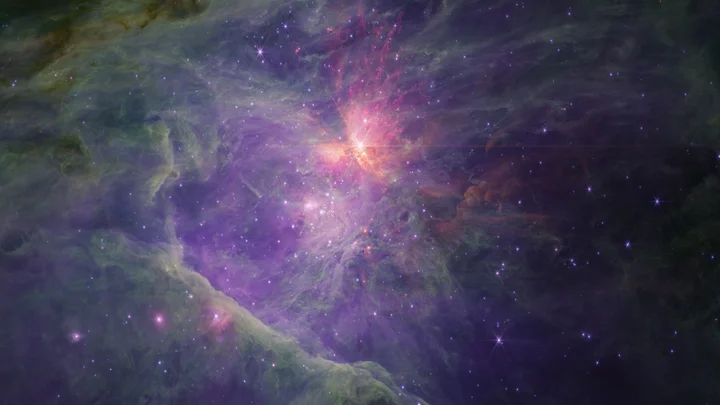
New discovery of rogue planets defies scientific theory and leaves experts baffled
Planet-like objects in the Orion Nebula have been revealed for the first time in images from the James Webb Space Telescope. The Orion Nebula, one of the brightest nebulae in the night sky, has long presented astronomers with an abundance of celestial objects to study. It is identifiable as the sword in the Orion constellation and is located 1,300 light-years from Earth. Astronomers managed to discover unprecedented details by capturing mosaics of the Orion Nebula in short and long wavelengths of light. Whilst searching for low-mass objects, astronomers Samuel G. Pearson - a European Space Agency research fellow at the European Space Research and Technology Centre in the Netherlands - and Mark J. McCaughrean - senior adviser for science and exploration at the European Space Agency - came across something they had never before seen. Their discovery appears to defy some fundamental astronomical theories: pairs of planet-like objects with masses between 0.6 and 13 times the mass of Jupiter. They have been dubbed Jupiter Mass Binary Objects, or JuMBOs. "Although some of them are more massive than the planet Jupiter, they will be roughly the same size and only slightly large," said Pearson. The astronomers found 40 pairs of JuMBOs, and although they exist in pairs, the objects are typically about 200 astronomical units apart, or 200 times the distance between Earth and the sun. This means it can take between 20,000 and 80,000 years for the objects to complete an orbit around each other. McCaughrean and Pearson have written two research papers based on their discoveries in the Orion Nebula. The preliminary findings are available on a preprint site called arXiv whilst the studies have been submitted to academic journals for publication. But many questions about JuMBOs remain. "Scientists have been working on theories and models of star and planet formation for decades, but none of them have ever predicted that we would find pairs of super low mass objects floating alone in space - and we're seeing lots of them," Pearson said. "The main that we learn for this is that there is something fundamentally wrong with either our understanding of planet formation, star formation, or both." Sign up to our free Indy100 weekly newsletter Have your say in our news democracy. Click the upvote icon at the top of the page to help raise this article through the indy100 rankings.
2023-10-08 21:17
